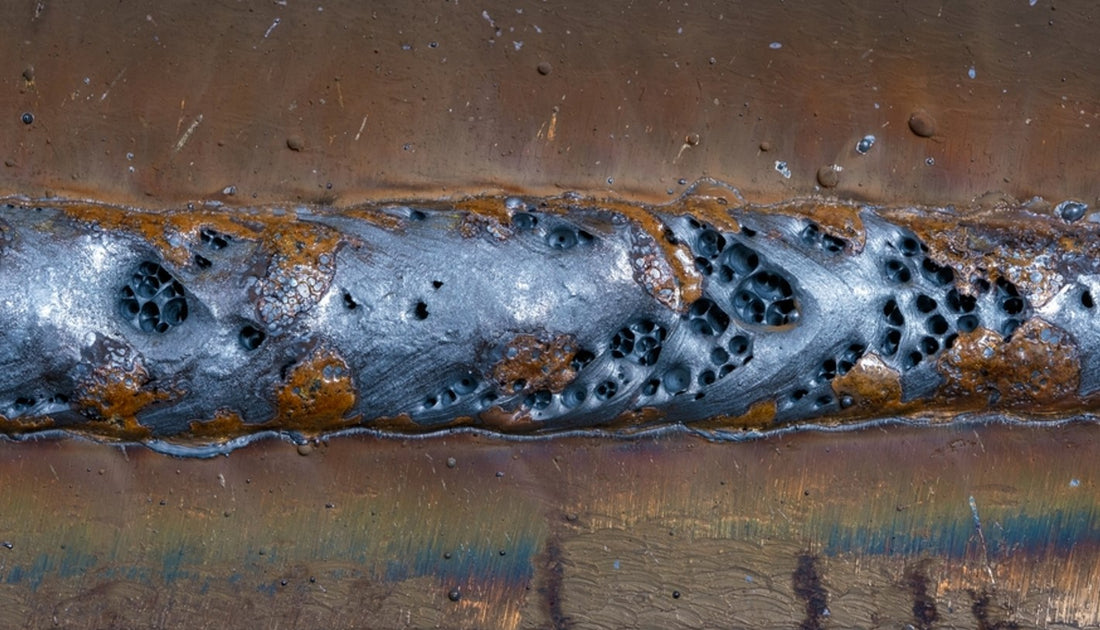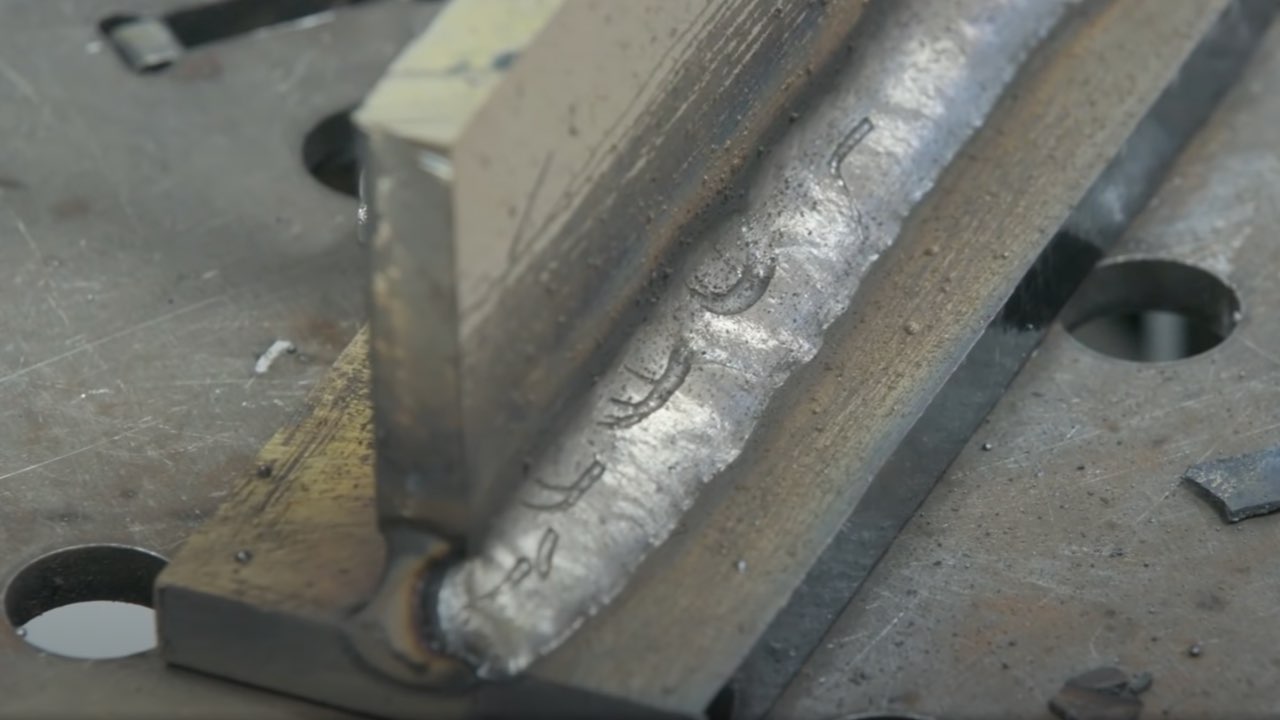What is Porosity in Welding: Comprehending Its Causes and Enhancing Your Skills
Wiki Article
Unwinding the Secret of Porosity in Welding: Tips for Decreasing Problems and Making The Most Of Quality
In the detailed globe of welding, porosity remains a relentless difficulty that can substantially influence the quality and stability of welded joints. Recognizing the aspects that contribute to porosity development is crucial in the pursuit of flawless welds. By deciphering the secret of porosity and implementing reliable techniques for issue reduction, welders can elevate the standards of their job to accomplish remarkable quality results. As we explore the depths of porosity in welding, discovering the tricks to its prevention and control will be extremely important for professionals looking for to understand the art of high-grade weldments.Understanding Porosity in Welding
Porosity in welding, a typical issue come across by welders, refers to the existence of gas pockets or gaps in the bonded product, which can endanger the integrity and quality of the weld. These gas pockets are typically trapped during the welding procedure due to different aspects such as improper securing gas, infected base products, or incorrect welding criteria. The formation of porosity can weaken the weld, making it at risk to cracking and corrosion, eventually causing architectural failings.By recognizing the importance of preserving appropriate gas securing, making certain the sanitation of base products, and maximizing welding setups, welders can considerably lower the likelihood of porosity formation. Generally, an extensive understanding of porosity in welding is crucial for welders to produce top notch and resilient welds.

Usual Reasons For Porosity
When examining welding procedures for prospective high quality issues, understanding the usual reasons of porosity is crucial for maintaining weld integrity and protecting against architectural failures. Porosity, defined by the existence of cavities or gaps in the weld metal, can considerably jeopardize the mechanical properties of a welded joint. One common cause of porosity is inappropriate shielding gas protection. Insufficient securing gas flow prices or incorrect gas mixes can lead to atmospheric contamination, causing porosity development.
Additionally, welding at inappropriate criteria, such as excessively high travel rates or currents, can produce extreme turbulence in the weld swimming pool, capturing gases and creating porosity. By resolving these usual causes through proper gas shielding, product prep work, and adherence to optimal welding parameters, welders can minimize porosity and improve the quality of their welds.
Strategies for Porosity Avoidance
Implementing efficient precautionary measures is essential in lessening the event of porosity in welding procedures. One strategy for porosity avoidance is guaranteeing appropriate cleansing of the base metal prior to welding. Impurities such as oil, grease, corrosion, and paint can result in porosity, so complete cleaning making use of ideal solvents or mechanical approaches is vital.
One more secret preventative measure is the selection of the ideal welding consumables. find more information Utilizing high-grade filler materials and securing gases that are suitable for the base steel and welding procedure can dramatically lower the risk of porosity. Furthermore, preserving appropriate welding parameters, such as voltage, present, travel speed, and gas flow rate, is important for porosity avoidance. Deviating from the suggested setups can lead to incorrect gas protection and poor combination, leading to porosity.
Additionally, using correct welding techniques, such as keeping a consistent traveling speed, electrode angle, and arc size, can assist protect against porosity (What is Porosity). Sufficient training of welders to guarantee they comply with best practices and quality control treatments is likewise essential in decreasing porosity problems in welding

Finest Practices for Quality Welds
Ensuring adherence to industry criteria and correct weld joint prep work are fundamental facets of attaining continually premium welds. In enhancement to these fundamental actions, there are a number of ideal methods that welders can carry out to even more boost the top quality of their welds. One secret method is keeping proper tidiness in the welding location. Pollutants such as oil, grease, corrosion, and paint can adversely impact the top quality of the weld, leading to flaws. Thoroughly cleaning the workpiece and surrounding location before welding can aid mitigate these concerns.One more finest practice is to very carefully choose the appropriate welding specifications for the particular i loved this materials being joined. This includes establishing the proper voltage, current, travel speed, and shielding gas flow rate. Correct criterion choice guarantees optimal weld infiltration, fusion, and total top quality. Moreover, utilizing high-quality welding consumables, such as electrodes and filler metals, can considerably affect the final weld high quality. Buying costs consumables can cause stronger, more sturdy welds with fewer problems. By adhering to these ideal methods, welders can continually generate top quality welds that fulfill sector criteria and go beyond client assumptions.
Value of Porosity Control
Porosity control plays an important role in making sure the honesty and top quality of welding joints. Porosity, identified by the existence of cavities or voids within the weld steel, can significantly endanger the mechanical buildings and architectural honesty of the weld. Too much porosity weakens the weld, making it extra prone to splitting, corrosion, and overall failing under functional lots.Efficient porosity control is essential for preserving the preferred mechanical residential or commercial properties, such as stamina, ductility, and durability, of the bonded joint. What is Porosity. By lessening porosity, welders can boost the general high quality and reliability of the weld, making certain that it satisfies the performance demands of the intended application
Furthermore, porosity control is vital for attaining the desired visual look of the weld. Excessive porosity not have a peek at this website just compromises the weld yet likewise diminishes its aesthetic appeal, which can be essential in industries where aesthetics are very important. Proper porosity control techniques, such as utilizing the correct protecting gas, regulating the welding criteria, and guaranteeing correct sanitation of the base materials, are essential for producing high-grade welds with marginal defects.

Conclusion
In conclusion, porosity in welding is a typical defect that can jeopardize the high quality of the weld. It is necessary to regulate porosity in welding to make certain the stability and toughness of the last product.Report this wiki page